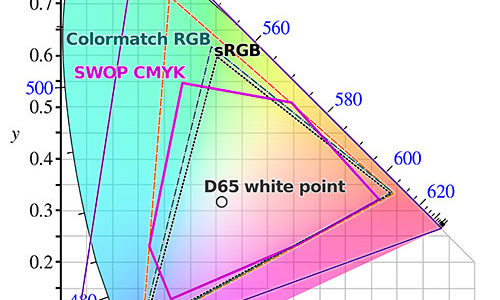The difference between a Hard Disc Drive (HDD) and a Solid State Drive (SSD): What to buy?
The difference between a Hard Disc Drive (HDD) and a Solid State Drive (SSD): What to buy?
Subscribe to YouTube
The difference between a Hard Disc Drive (HDD) and an Solid State Drive (SSD)
SPINDLE HDD

SOLID STATE DRIVE

Hard disk drives (HDD) and solid-state drives (SSD) are two common types of storage devices used in computers and other electronic devices. They differ in several key ways:
- Storage technology: HDDs use spinning disks to store and retrieve data, while SSDs use flash memory.
- Speed: SSDs are faster than HDDs as they have no moving parts and can access data almost instantly. HDDs, on the other hand, take longer to access data as the disk needs to spin to the correct location.
- Capacity: Currently, HDDs tend to be larger in storage capacity compared to SSDs, which are generally more expensive per gigabyte of storage.
- Durability: SSDs are more durable as they have no moving parts and are less likely to fail due to physical shock or wear and tear. HDDs, on the other hand, are more susceptible to physical damage and can fail if dropped or subjected to physical shock.
- Power consumption: SSDs consume less power than HDDs, which can help prolong battery life in laptops and other mobile devices.
- Cost: SSDs are generally more expensive per gigabyte of storage compared to HDDs, but the prices are coming down.
In summary, SSDs offer faster performance, increased durability, and lower power consumption, while HDDs tend to offer higher storage capacities at a lower cost. The choice between an HDD or SSD depends on the specific needs and budget of the user.
What is the Difference Between a Powered HDD and a Bus-Powered HDD
A powered hard drive (HDD) and a bus-powered hard drive refer to the power source of the hard drive.
A powered hard drive is a standalone device that requires a separate power source, usually a AC/DC adapter, to operate. This type of hard drive is typically used in desktop computers and external hard drives that require more power to operate.
On the other hand, a bus-powered hard drive receives power from the computer through the data cable that connects the drive to the computer’s motherboard. This type of hard drive is typically used in laptop computers or external hard drives that are compact and portable.
Solid State Drive (SSD)
A Solid State Drive (SSD) is a type of storage that uses flash memory to store data. Unlike traditional hard drives, SSDs have no moving parts, making them faster, more reliable, and less prone to failure.
Pros:
- Fast data transfer speeds: SSDs are significantly faster than optical hard drives, allowing for faster boot times, application launches, and data transfers.
- Reliable: The lack of moving parts in SSDs makes them more reliable and less prone to failure compared to traditional hard drives.
- Silent operation: SSDs make no noise, as they have no moving parts.
Cons:
- Higher cost: SSDs are typically more expensive than traditional hard drives or optical drives.
- Limited storage capacity: While SSDs are getting larger in capacity, they still can’t match the storage capacities of traditional hard drives or optical drives.
Both spindle hard drives and solid-state drives have their own set of pros and cons, and the best option for you will depend on your specific needs. If you’re looking for a large, affordable, and portable storage solution, an optical hard drive may be the way to go. However, if speed and reliability are your top priorities, a solid-state drive is the better choice.
What is the Difference Between Retail and Enterprise Spindle HDD’S
Retail hard disk drives (HDD) and enterprise HDDs are designed for different purposes and therefore have several key differences.
- Purpose: Retail HDDs are designed for consumer use in personal computers and other consumer electronic devices. Enterprise HDDs are designed for use in servers, data centers, and other commercial applications where high performance, reliability, and durability are required.
- Performance: Enterprise HDDs are generally faster and have better performance compared to retail HDDs as they have a higher number of disk platters and heads, larger cache sizes, and more advanced error correction technologies.
- Reliability: Enterprise HDDs are designed for 24/7 use, with features such as error correction, redundant components, and hot-swappable design to ensure high reliability and prevent data loss in the event of a failure. Retail HDDs, on the other hand, are typically less reliable and less durable.
- Price: Enterprise HDDs are generally more expensive than retail HDDs due to their advanced features and increased reliability.
In general, I prefer Enterprise hard disc drives. Enterprise drives are usually found in Network Attached Servers or Servers, but B+H Photo /Video does sell internal and external enterprise drives. The two main brands are Western Digital Red, and Seagate Iron Wolf Pro.
What would I buy, well both. I would only use an SSD in a computer, and I work off an SSD. For back-ups and video storage, I use spindle hard drives because of their capacity and cost.
Would you like to to find out more about digital photography. Check out my other miscellaneous posts https://johnwhiteheadimages.com/category/miscellaneous/


[…] State Drive (SSD). SSDs are faster and more reliable than HDDs, but they are also more expensive. For more information on the differences between SSD and HDD check out my blog. Below are the Computer Specifications For Adobe […]
[…] https://johnwhiteheadimages.com/2023/02/09/hard-disc-drive-solid-state-drive/ […]
[…] https://johnwhiteheadimages.com/2023/02/09/hard-disc-drive-solid-state-drive/ […]